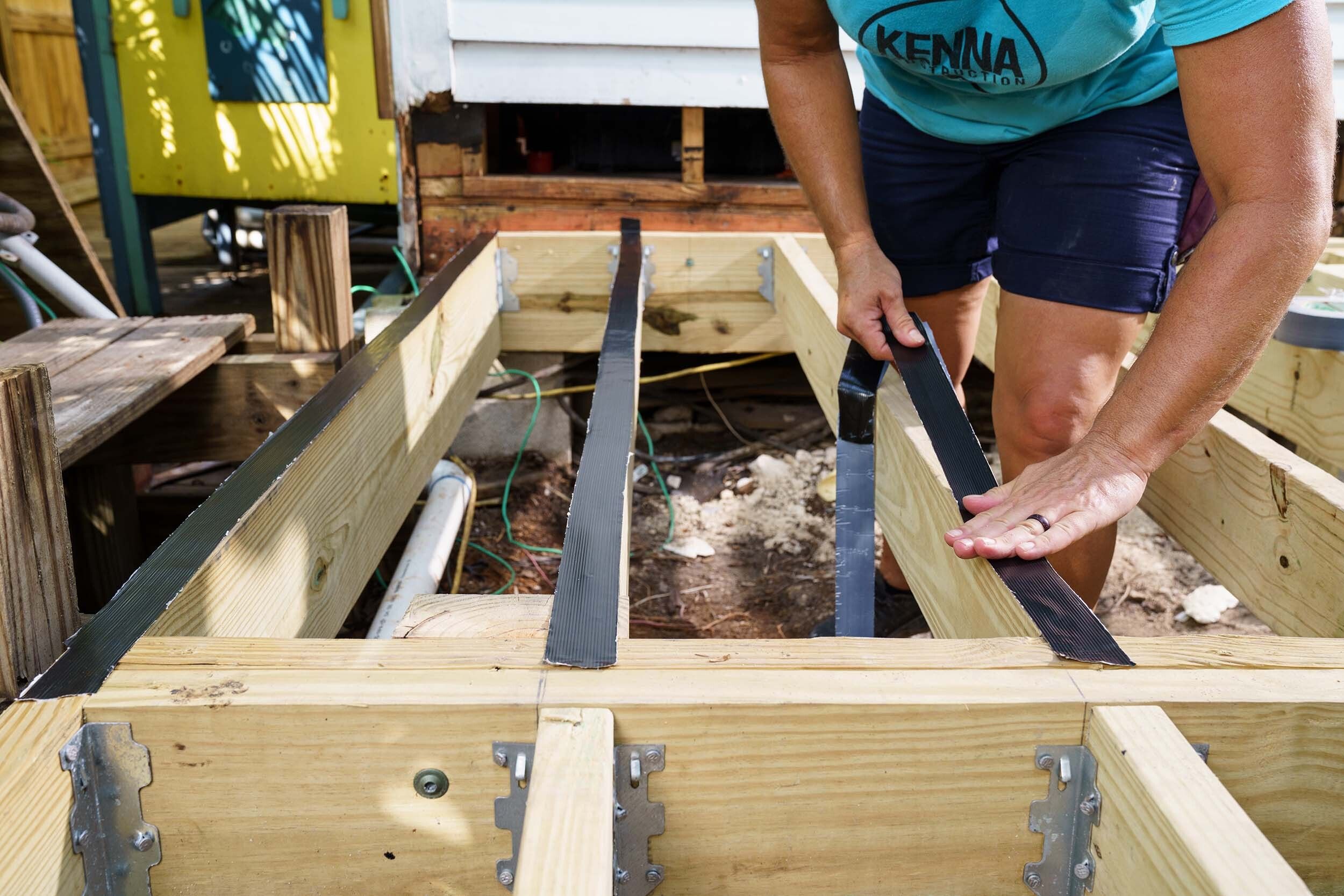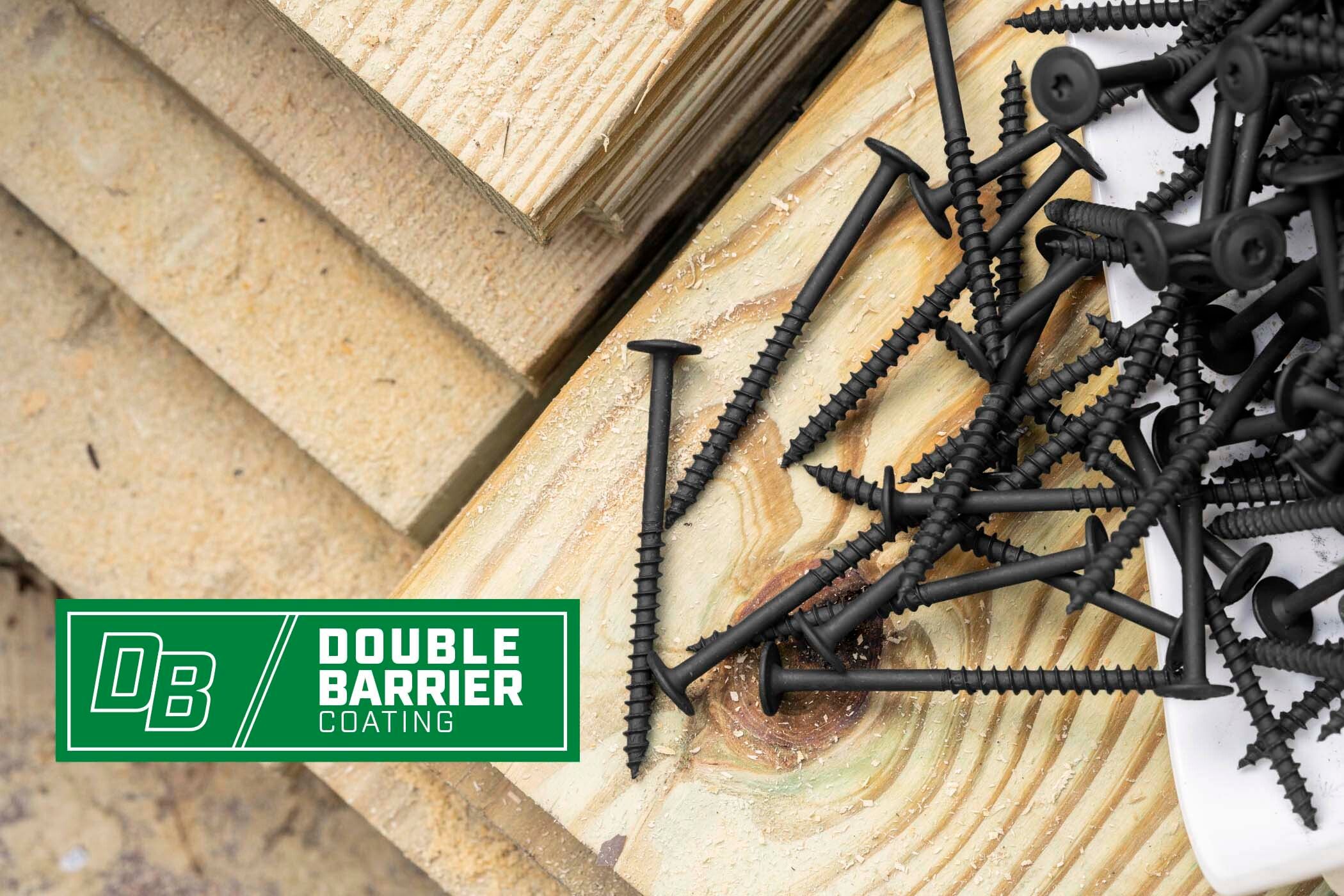
5 Ways to Prevent Rotting in Decks and Exterior Structures
Consider Material
Not all materials are created equal. For example, you wouldn’t build a deck with just any old wood. You’re going to find a treated or composite material designed to hold up outdoors.
The same rules apply to your fasteners.
For example, SPAX corrosion-resistant screws are made with the right materials (HCR, HCR-X coating and stainless steel) to prevent rust and corrosion. They’re also approved for use in treated lumber.
SPAX T-STAR plus PowerDeck Trim Head engineered fasteners are made from 304 stainless steel for a premium level of corrosion resistance against red rust. They are tested and recognized for use in coastal construction (e.g., AWPA UC1-UC4B, UCFA and UCFB).
SPAX T-STAR plus Flat Head HCR-X fasteners are plated with an HCR double-barrier coating. HCR, or High Corrosion Resistance is tested and recognized for use in ground contact pressure treated lumber for exterior, freshwater general construction applications (e.g., AWPA UC1-UC4A, UCFA).
Materials matter for long-term results.
Use Joist Tape
Every screw hole introduces the possibility of water penetration in your deck. And when water is trapped between your joists and deck boards, that can be the perfect combination for rot.
That’s why we always recommend using specialized waterproof joist tape before installing your deck boards. SPAX Deck Joist and Beam Tape seal tight around each fastener and prevent water penetration to the substructure—potentially adding up to ten years to the life expectancy of your deck.
Avoid Splitting
Split boards will eventually rot and corrode. Prevent your boards from splitting with SPAX Engineered Fasteners.
Our all-star decking screws are engineered to prevent splitting and require no pre-drilling for an effective countersink. All of the cuts, patented threads, and ribs are on our fasteners for a reason—to keep boards secure and tight, lessening the chance of a split.
Replace Old Boards
Withering old boards are often a cause of rotting and corrosion. Replacing old boards regularly is a preventative measure to keep decks solid and free of rotting areas.
Reduce Water Pooling
Sections of the deck that collect water when it rains or snows will eventually lead to more corrosion.
Combat areas of standing water on the deck by building the deck with a slight slope or using an under-deck drainage system. You can also cover or protect your joists with deck joist flashing tape to prevent moisture from damaging your boards.
Secure Boards Tightly
When building any deck or exterior structure, it is vital to secure all of your boards tightly to prevent corrosion or rust. When a board splits, rot and corrosion are sure to follow. SPAX T-STAR plus PowerDeck Trim Head, Double ThreadLok are engineered with special features to combat splitting and secure boards tightly with ease.
The Unique 4CUT Point and patented thread serrations prevent splitting without pre-drilling. The Double ThreadLok design pulls and holds boards tight, preventing screws from backing out and boards from squeaking as the lumber dries out.

Our Double Barrier Coating
Our HCR® (High Corrosion Resistance) double-barrier coatings offer superior protection with a double barrier. First plated with a zinc base coat and finished with a durable top coat, they’re engineered to hold up to the harshest conditions. Tested and recognized for use in ground contact pressure treated lumber for exterior, freshwater general construction applications (e.g., AWPA UC1-UC4A, UCFA).
DID YOU KNOW?
Some competitors don’t actually test their coatings. They rely on data from their paint company before it makes it onto their screws.
Related Products



AWPA Building Codes
Building code officials are required to have in-depth knowledge of all types of construction methods and thousands of different products used in modern buildings. The International Code Council’s committees recognize AWPA as the authority on treated wood and have directly referenced AWPA Standards in the International Building Code and International Residential Code in applications where preservative treated wood is required.
The Use Categories are a shorthand method of describing the various hazards to which wood products may be exposed. A brief description of the Use Categories is shown.
Information referenced from the AWPA site.
| Use category | Brief description |
|---|---|
| UC1 | Interior Dry |
| UC2 | Interior Wet |
| UC3A | Exterior Above Ground, Coated with Rapid Water Runoff |
| UC3B | Exterior Above Ground, Uncoated or Poor Water Runoff |
| UC4A | Ground Contact, General Use |
| UC4B | Ground Contact, Heavy Duty |
| UC4C | Ground Contact, Extreme Duty |
| UC5A | Marine Use, Northern Water (Salt or Brackish Water) |
| UC5B | Marine Use, Central Water (Salt or Brackish Water) |
| UC5C | Marine Use, Southern Water (Salt or Brackish Water) |
| UCFA | Interior Above Ground Fire Protection |
| UCFB | Exterior Above Ground Fire Protection |



